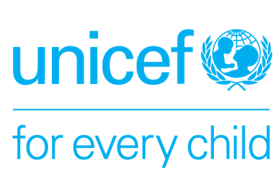South Asia has the highest percentage of children exposed to extreme high temperatures, compared to all other regions, according to a UNICEF analysis.
UNICEF estimates that 76 per cent of children under 18 in South Asia – 460 million – are exposed to extreme high temperatures where 83 or more days in a year exceed 35°C. This means that 3 in 4 children in South Asia are already exposed to extreme high temperature compared to only 1 in 3 children (32 per cent) globally. The analysis is of 2020 data, the latest available.
In addition, the data also show that 28 per cent of children across South Asia are exposed to 4.5 or more heatwaves per year, compared to 24 per cent globally.
July was the hottest month ever recorded globally, raising further concerns about a future where children, including those living in South Asia, are expected to face more frequent and severe heatwaves, largely due to climate change.
“With the world at global boiling, the data clearly show that the lives and well-being of millions of children across South Asia are increasingly threatened by heat waves and high temperatures. Countries in the region are not the hottest in the world right now but the heat here brings life-threatening risks for millions of vulnerable children,” said Sanjay Wijesekera, UNICEF Regional Director for South Asia. “We are particularly concerned about babies, toddlers, malnourished children and pregnant women as they are most vulnerable to heat strokes and other serious effects.”
According to UNICEF’s 2021 Children’s Climate Risk Index (CCRI), children in Afghanistan, Bangladesh, India, Maldives, and Pakistan are at ‘extremely high risk’ of the impacts of climate change.
In parts of Pakistan’s southern Sindh province, including Jacobabad, the world’s hottest city in 2022, temperatures were in their 40’s in June, exposing 1.8 million people to severe short- and long-term health risks. The scorching heat came less than one year after the devastating floods which left most parts of southern Sindh underwater in August 2022. More than 800,000 children in flood-affected areas were at risk of severe heat stress in June 2023.
Even in the rainy season, the heat can exacerbate the situation for children. Since children cannot adapt quickly to temperature changes, they are not able to remove excess heat from their bodies. This can cause symptoms and illnesses such as higher body temperature, rapid heartbeat, cramps, severe headache, confusion, organ failure, dehydration, fainting and coma, in young children; poor mental development in infants; and developmental setbacks such as neurological dysfunction, and cardiovascular diseases. Early contractions, hypertension, seizures, high blood pressure, preterm births and stillbirths are risks for pregnant women, who are particularly susceptible to heat.
For young children, ice packs, fans or misting with water can help lower their body temperature, while cold water immersion can help older children.
Education, awareness, and preparedness are key to responding to this crisis. During high temperatures, UNICEF urges frontline workers, parents, families, caregivers and local authorities to protect children and B.E.A.T. the heat by taking the following steps:
- BE AWARE of heat stress and protect yourself and your children. Take preventive measures and recognise heat stress and know what actions to take;
- EASILY IDENTIFY the symptoms. Recognise the symptoms of various heat-related illnesses that caregivers, communities and front-line workers need to know;
- ACT IMMEDIATELY to protect. Learn the first-aid actions that caregivers and front-line workers need to take to rebalance body heat in the short term; and
- TAKE to a health facility. Front-line workers, families and caregivers should recognise the symptoms of heat stress symptoms immediately, especially signs of heat stroke, and help take affected people to a health facility.
Ultimately, the most vulnerable children, adolescents and women are the ones that pay the highest price for extreme weather events.
“Young children simply cannot handle the heat,” added Wijesekera. “Unless we act now, these children will continue to bear the brunt of more frequent and more severe heatwaves in the coming years, for no fault of theirs.”
About UNICEF
UNICEF works in some of the world’s toughest places, to reach the world’s most disadvantaged children. Across more than 190 countries and territories, we work for every child, everywhere, to build a better world for everyone.
Follow UNICEF on Twitter, Facebook, Instagram and YouTube.
Publish your content with EB Publishing
It's about who you reach. Get your news, events, jobs and thought leadership seen by those who matter to you.











